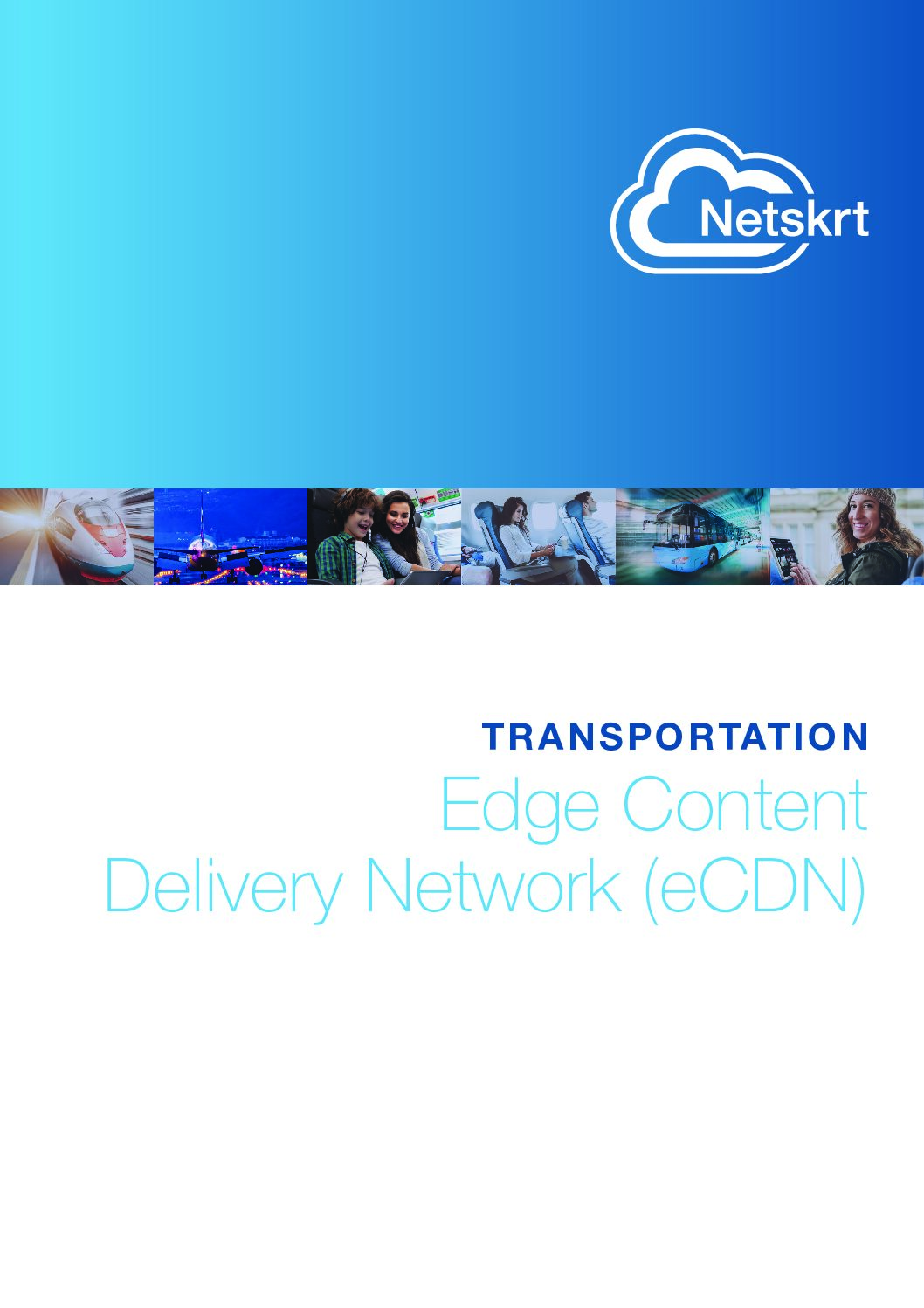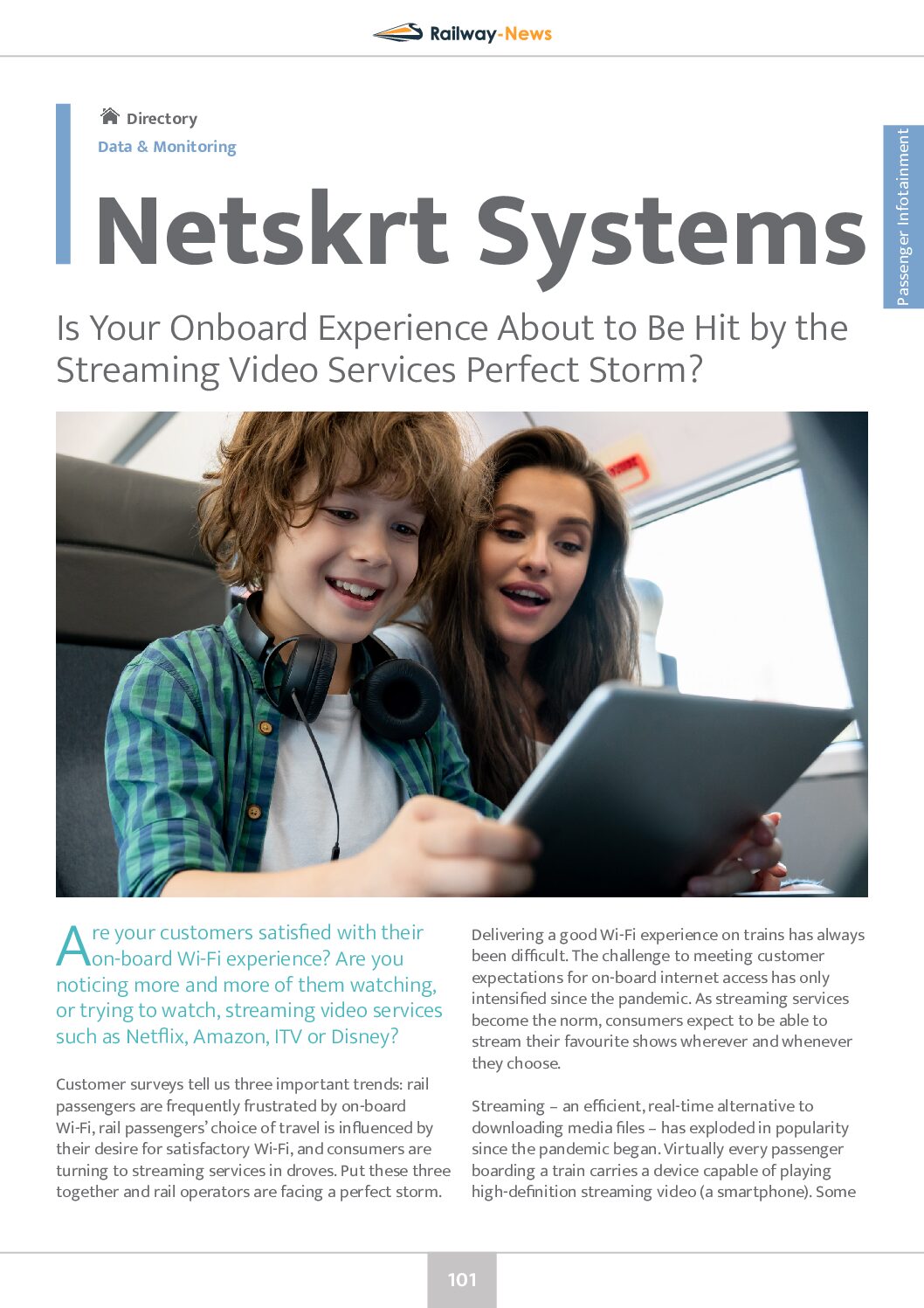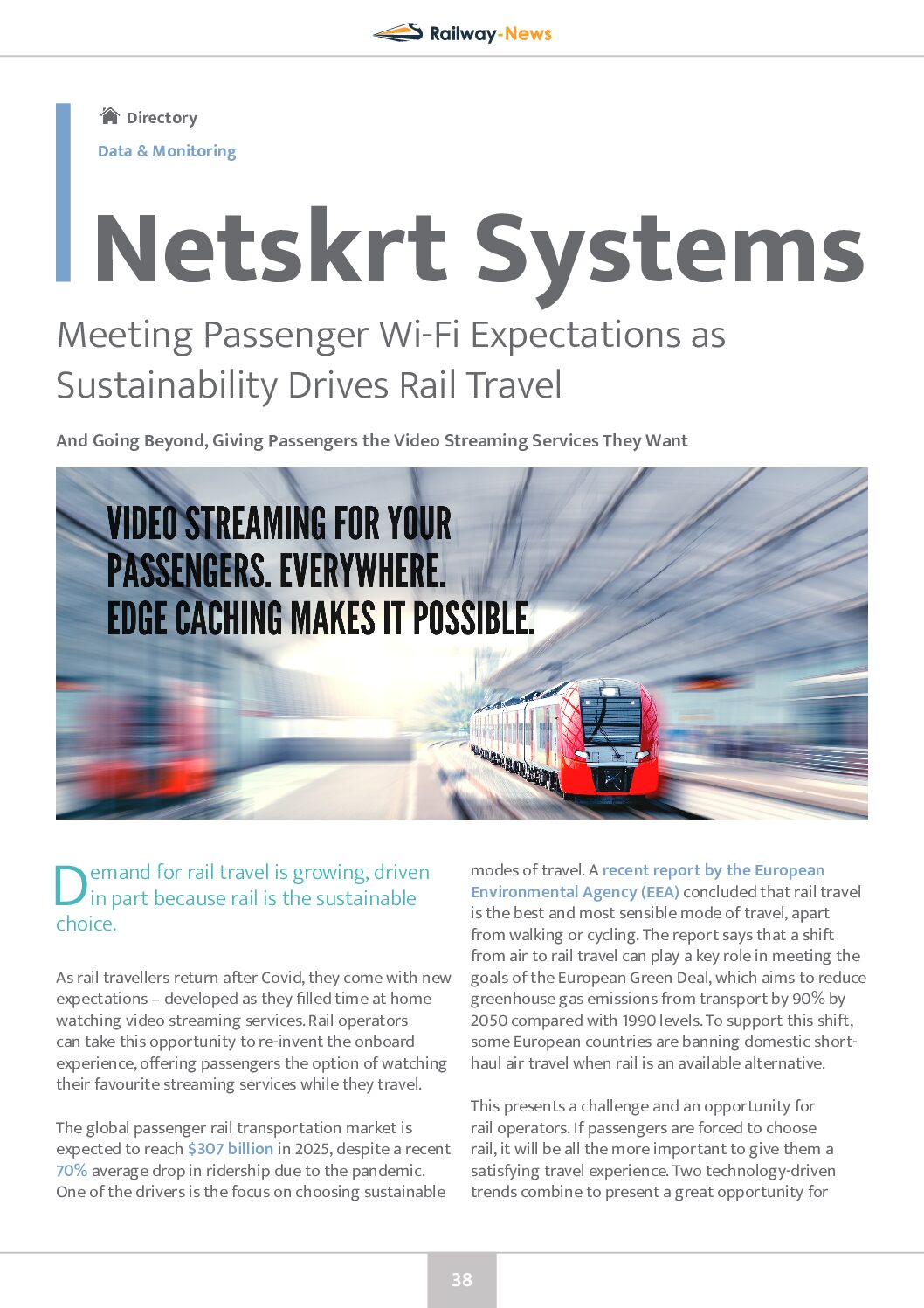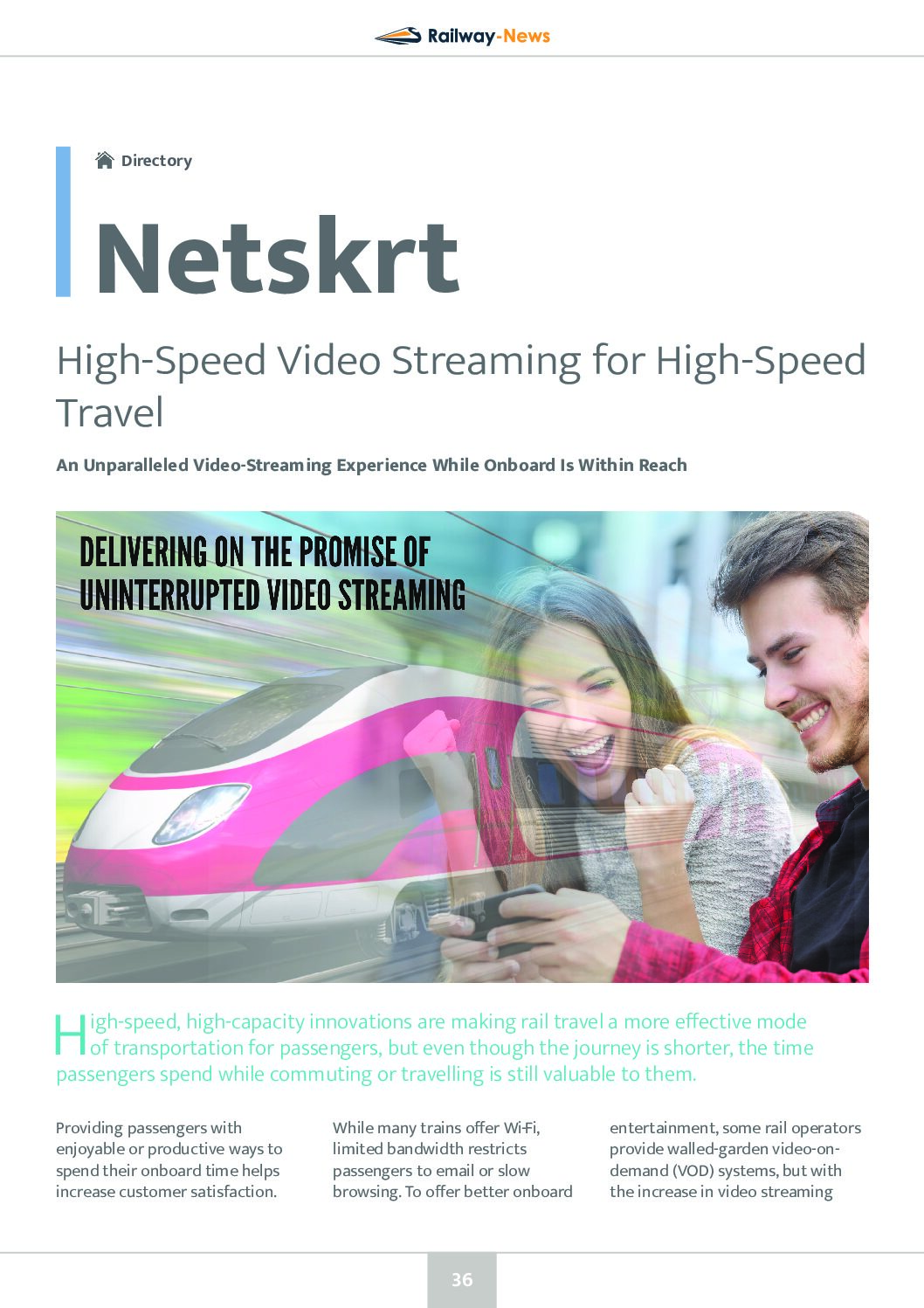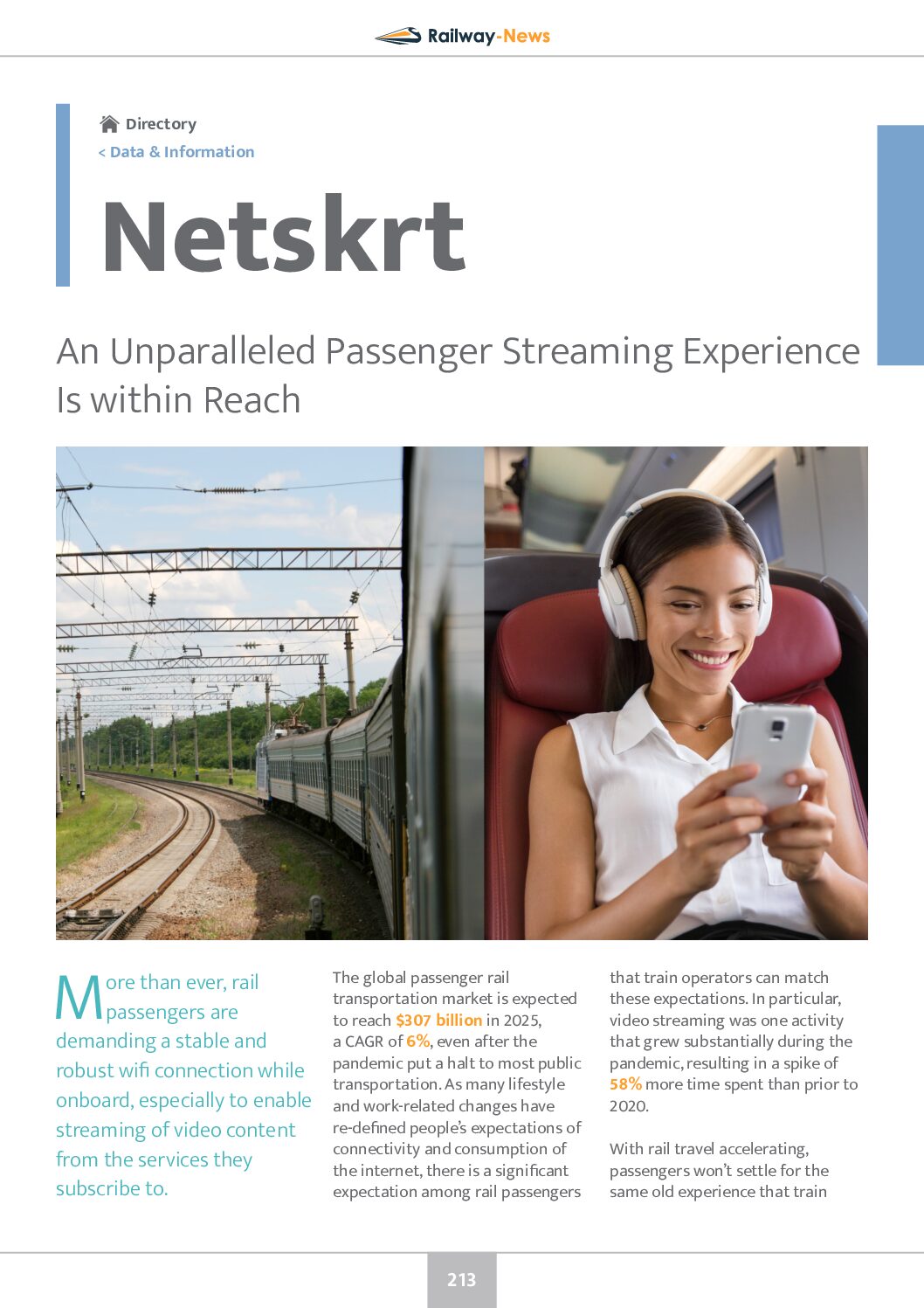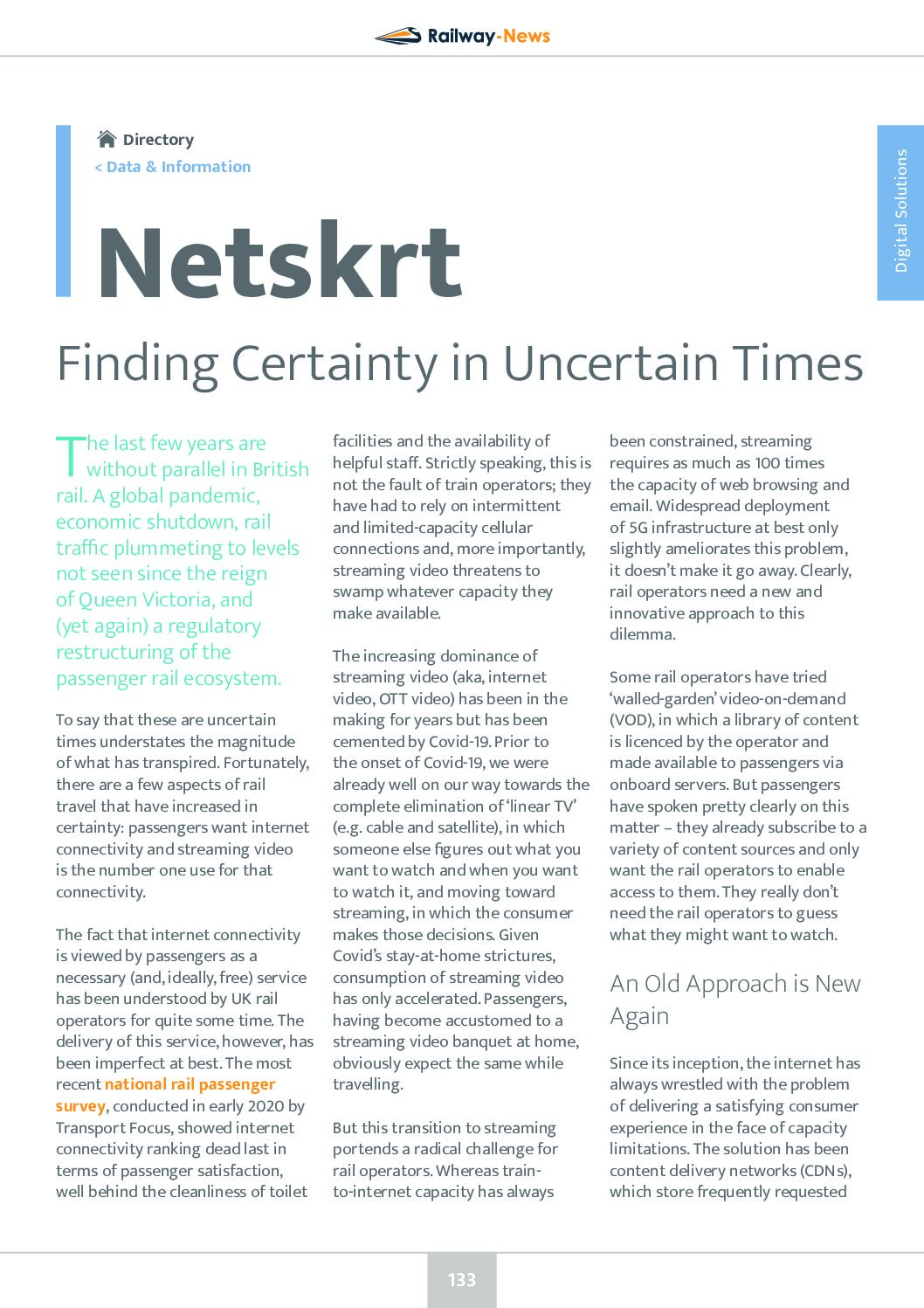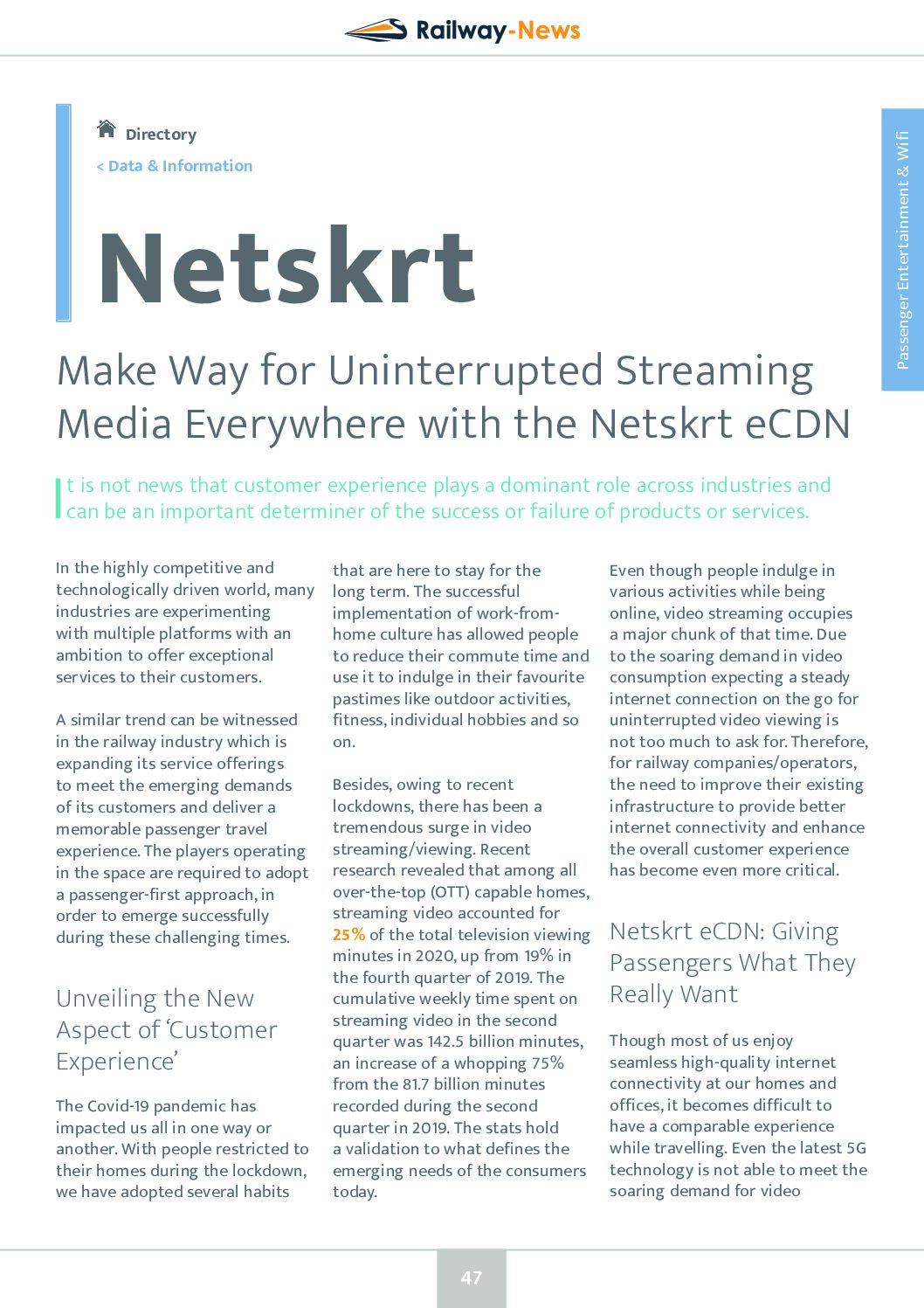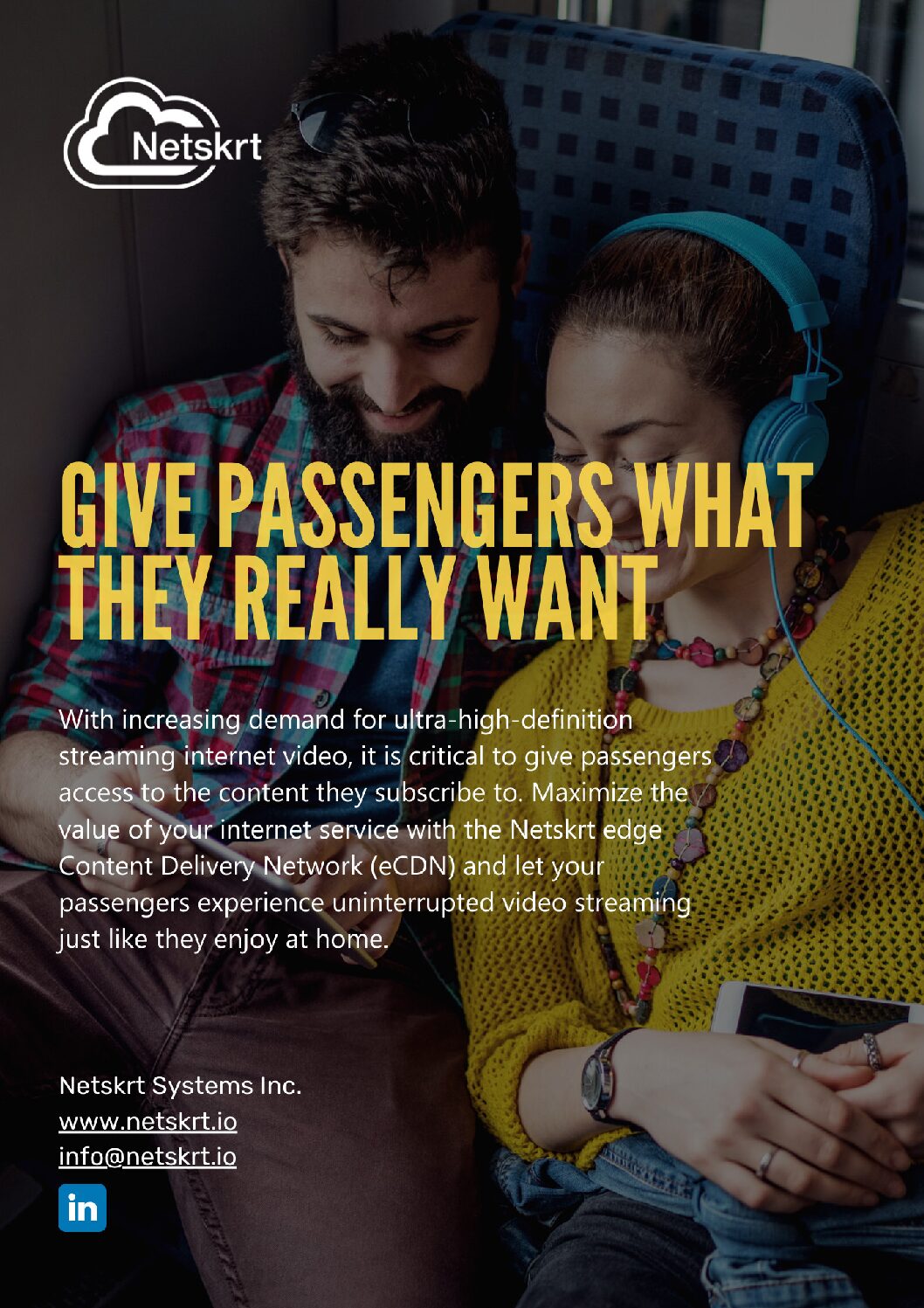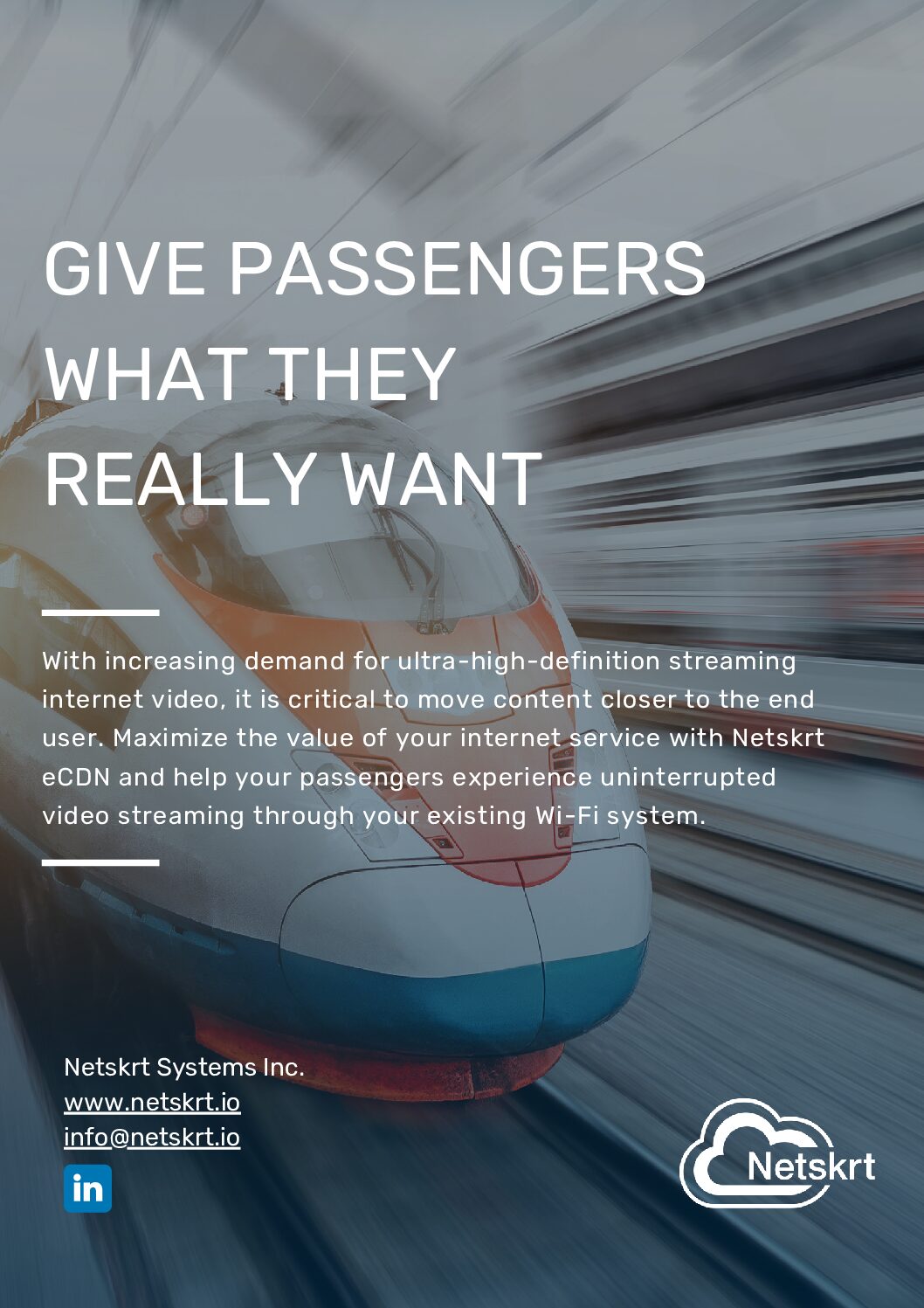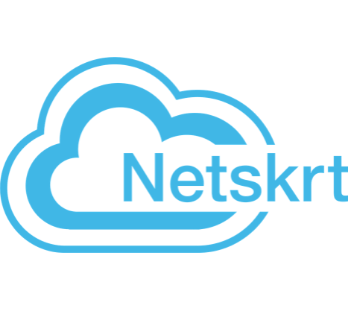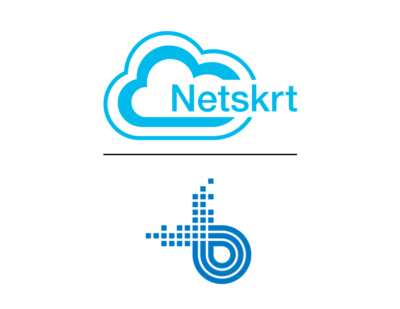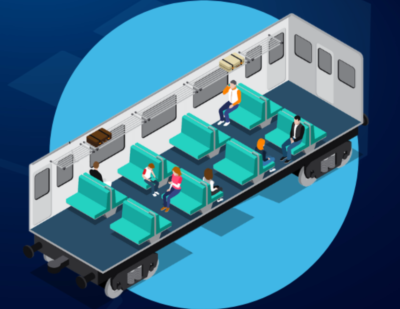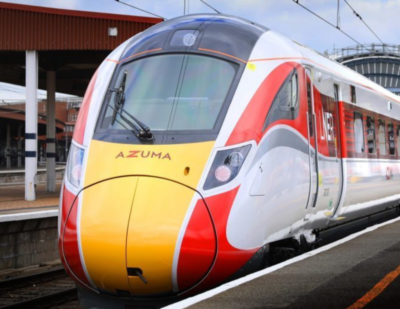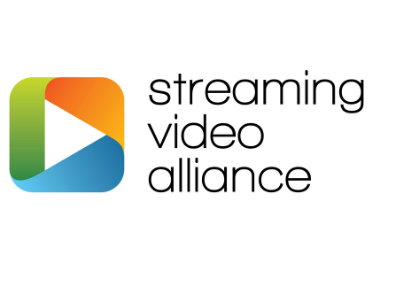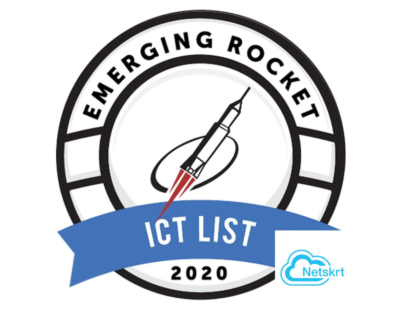Netskrt Systems
Edge Content Delivery Network (eCDN)
What Do Passengers Want?
An explosion in the availability of streaming internet video is pressuring transportation operators—especially rail, air, and bus—to provide better connectivity services for their passengers. But while access to the internet, typically through onboard Wi-Fi, has been common for years, support for streaming internet video introduces an entirely new challenge. Transportation operators have become accustomed to the constant pressure to increase internet speeds but video changes the bandwidth calculus by orders of magnitude—requiring potentially as much as a 100-fold increase in bandwidth.
Clearly, in addition to being technically infeasible in most transportation environments, providing such a large amount of bandwidth is a non-starter from a financial perspective. For these reasons, streaming media has been explicitly blocked by most transportation operators.
Given that internet access is frequently among the top complaints cited by rail, air, and bus passengers yet is expected to always work flawlessly (and sometimes even be available for free), what can transportation operators do to better meet their passenger demands while minimizing costs associated with providing internet access?
A New Take On an Old Approach
The problems faced by transportation operators are simply extreme examples of problems that have been faced since the dawn of the web—how to deliver better consumer performance in the presence of downstream bandwidth bottlenecks. For years, content delivery networks (CDNs) have been the dominant technology allowing content providers to give their customers better performance on a global scale. Streaming internet video has made CDNs even more indispensable.
But existing CDN technology fails to deliver when bandwidth between the cache and the consumer is intermittent or constrained. Transportation use cases represent precisely the environment CDNs are most ill-suited to handle large pockets of passengers connected to the internet via thin cellular of satellite connections. Even increasingly available 5G does little to rectify this situation.
The Netskrt Edge CDN (eCDN)
By combining advanced cloud analytics and machine learning with high capacity, low cost storage and sophisticated network adaptation, Netskrt is the first to bring CDNs to dense, mobile environments such as trains, buses, and airplanes. Patented Netskrt technology overcomes major deficiencies in traditional CDNs that prohibit them from being deployed to locations with small user populations. Netskrt does this in such a way that exist- ing internet and Wi-Fi connectivity does not need to be upgraded and works transparently with existing passenger streaming subscriptions.
Lower Cost, Better Experience
The Netskrt eCDN managed service uniquely delivers a streaming internet video experience indistinguishable from what passengers enjoy at home, including HD and UHD (4K) video. And by reducing bandwidth consumption on capacity-constrained cellular and satellite connections, Netskrt also improves performance for business passengers, social media addicts, and gamers. Best of all, Netskrt bends the internet connectivity cost curve in a downward direction, yielding substantial long-term cost savings while improving overall passenger satisfaction.
The internet landscape still has dark spots; locations that are cut off or poorly served. Air, rail, and bus passengers around the world are all too familiar with this problem. A rich trove of streaming internet video makes this situation orders of magnitude worse. Instead of web pages that take too long to load, video is blocked or simply won’t play. Transportation passengers cite this as one of their top complaints.
Netskrt shines a light on these internet dark spots, delivering ultra high definition video to all passengers without taxing internet bandwidth and without resorting to stale, limited video on demand libraries that passengers have shown they dislike.
Netskrt’s unique edge content delivery network (eCDN) service provides a vastly superior passenger internet experience while capping and even reducing internet connectivity costs for transportation carriers.
